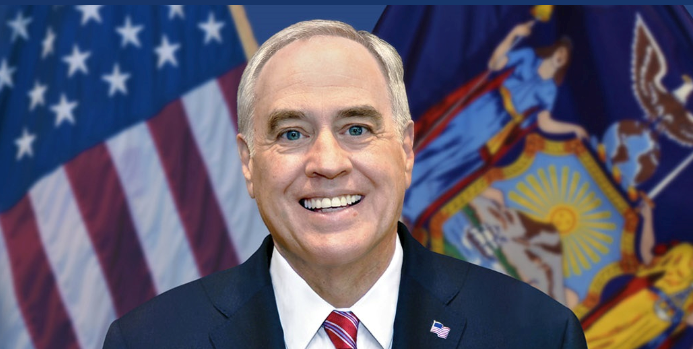The foreign-born labor market grew 18.5% since 2015 nationally, while New York City’s declined 0.6% through 2023, according to data analyzed from the Bureau of Labor Statistics. Still, in 2023, New York City’s 1.8 million foreign-born workers made up 44.3% of its total labor force, more than double the national share of 18.6%.
“New York City’s labor market and economy greatly benefit from the contributions of immigrant workers,” DiNapoli said. “Many industries rely on foreign-born workers to keep businesses going, but we’ve seen a decline in this workforce when compared to the city’s peak in 2015. There are still many barriers for individuals who come to the U.S. looking for work and a better life. Federal immigration policy must be reformed to ensure that the economic prosperity that foreign-born workers have helped fuel in New York City can continue.”
Many industries in the city depend on the immigrant workforce, including construction, where foreign-born workers made up almost 70% of all workers, while 65% worked in transportation and utilities, and nearly 55% worked in manufacturing last year. The foreign-born labor force in the city is concentrated in industries that pay less than the private sector as a whole, such as health care and social assistance and accommodation and food services. Still, foreign-born workers contributed nearly $383 billion to the city’s economy in 2022. A diminished foreign-born workforce could hurt businesses and lead to less entrepreneurship and fewer jobs.
DiNapoli’s report notes federal immigration policies and the COVID-19 pandemic likely contributed to the lack of growth in the city’s foreign-born workforce.
Prior to the pandemic, several federal immigration policies may have disproportionately impacted the immigrant workforce in New York City. In 2017, a more stringent deportation policy was implemented. As a result, there was a 165% increase in immigrants living in New York City being sent back to the country from which they emigrated. The number of deportations grew from a low of 1,037 in federal fiscal year (FFY) 2016 to a high of nearly 2,800 in FFY 2019. During that time, fewer people obtained temporary or permanent visas to legally live and work in the U.S.
Also, federal changes to Temporary Protected Status (TPS) likely played a role in slowing the city’s immigrant labor force recovery. TPS allows people from other countries to live and work in the U.S. legally if fleeing war or a natural disaster, but in late 2017, the federal government ended the program for people coming to the U.S. from El Salvador, Haiti, Nicaragua, Sudan, Nepal, and Honduras.
The pandemic halted visas and travel generally to the U.S. In addition, many industries that involve face-to-face contact employ a larger share of immigrant workers. Workers not born in the U.S. faced a higher unemployment rate than native-born New Yorkers in 2020, and by 2023, the portion of these foreign-born workers who were not U.S. citizens still had double the unemployment rate than in 2019.
DiNapoli recommends the state Department of Labor improve how it evaluates and reports which employers hire asylum seekers and which jobs are accepted, while the federal government speed up court processing and work permits and increase aid to the state and city for asylum seekers.
It is recommended the city make business ownership easier for foreign-born workers by eliminating language, literacy and technological barriers along with increasing financial education and eliminating bureaucratic red tape and city agencies provide necessary and timely resources for residents to succeed in the workforce.




